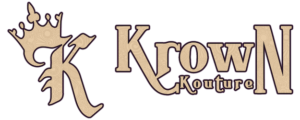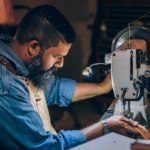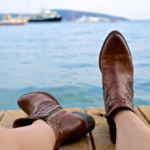Leather Guide 102 By Krown Kouture
Leather, as known widely, is a material used far and wide. In fact, almost a plethora of products are made out of leather. Ranging from clothes, jackets, shoes, belts, bags and covers to furniture. However, processing a leather is an art. A craft that is best handled by experts!
There are infinite number of leather grades or at least the same number as there are tanneries in the world. The broad generalizations are Full Grain leather, Top Grain leather, Suede and Genuine leather. All leather grades have to undergo a form of treatment and tanning. And everyone should know what they are buying. And Krown Kouture makes the finest products with the top grade leathers.
Let’s set the confusions straight! Following Krown Kouture’s leather guide, we present the second part. The first part gives details about the various sources of leather and their usage. While, the second part sheds light on the various tanning methods and leather grades.
Leather Grade Spectrum
Prior to treating leather, the leather hide is split. And this generates the grades. Starting with, the raw hides have a thickness range of 6 mm to 10 mm. Obviously, this is not usable to make leather goods. Thus, the hide is split. Also, customer’s orders determine the exact thickness of the split. Only the top cut is usually considered. As the top grain contains the full grain of the hide whereas the bottom cut is either left or split further. types of grades xxx
Full Grain Leather
Uniquely, this is the top of the chain. Primarily, it is a piece of leather that has the full, complete grain of the hide intact. So, it has the entire thickness. Notably, it is the most durable and resistant to wear. It also does not tear easily. The two common full grain leathers are vegetable tanned leather and distressed leather. The highest quality luggage, furniture, bags and footwear are made of it. As it lasts a longer time!
Top Grain Leather
Second is top grain leather. It is made from top cut of the hide but not always! Furthermore, it falls in the top tier with full grain leather. However, it is different from full grain. Full grain has the complete grain intact. While, top grain has its leather buffed and sanded. In fact, this buffing removes the scarring and blemishes of the hides. Also, it is thin. Additionally, it makes the surface smooth and uniform. It is also water resistant and prevents stains. For this reason, most of the designer handbags are made from top grain.
Split Grain Leather
It is made from the bottom split of the hide. And does not contain any of the hide’s grains. Suede is the most common form of it. The soft linings of the leather products use this grade. The products are belts, shoes, handbags and jackets. This suede lining is different from the suede used in shoes. Although suede feels great, it’s less durable because its thinner and absorbs liquid easily due to its porous surface. Because it lightly sanded, it has a signature velvety feel.
Genuine Leather
Indeed, the most common term heard by public. Ironically, genuine leather is close to the bottom of the grade barrel. It does not have any grain. Moreover, it is heavily processed. In fact, products made from faux leather are better than genuine leather. Also, known as Corrected Grain, because of the impressed pattern. Spraying it with a fake grain gives a natural appearance.
Tanning Process
Furthermore is the tanning process. The process of tanning involves five distinct stages. Pre-Tanning, Tanning, Selecting, Dressing and Finishing. Every step is meticulous and precise. First, Pre-Tanning involved soaking, lining and splitting the leather. Following with Tanning, which includes converting pre-tanned leather into hide. It ranged from mineral tanning and synthetic tanning to vegetable tanning. Third is Selecting. This involves removing excess water from hides. Fourth is Dressing. It has shaving, dyeing, re-tanning, setting, drying and trimming. Final is Finishing. The finishing process uses a combination of surface coating techniques such as padding, spraying or roller coating. Also, there are mechanical processes such as buffing, staking and embossing.




Leave a Reply
Want to join the discussion?Feel free to contribute!